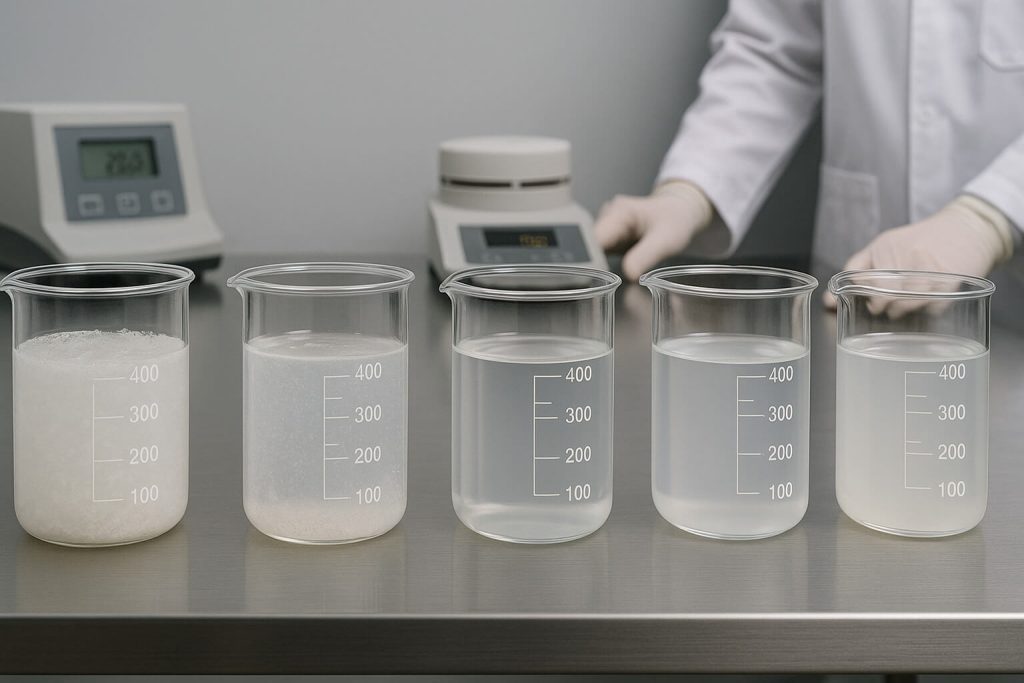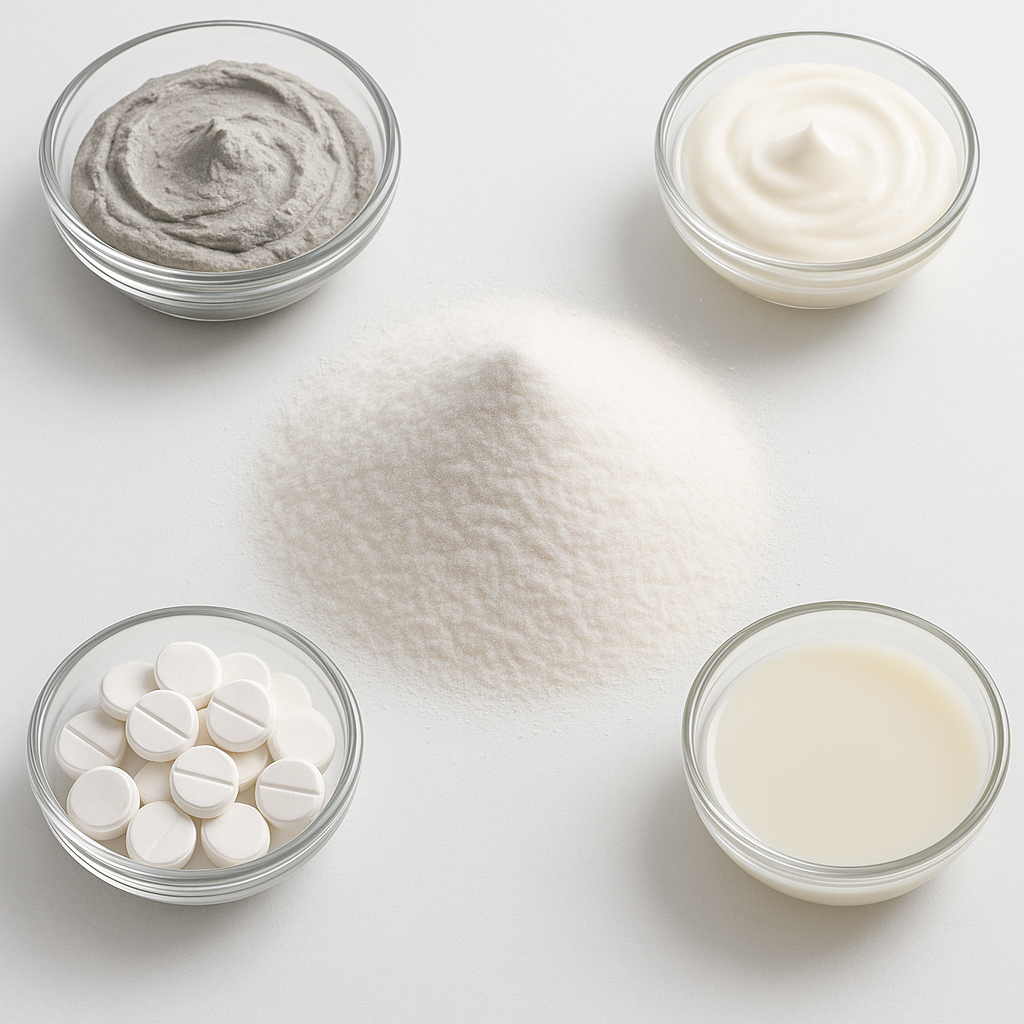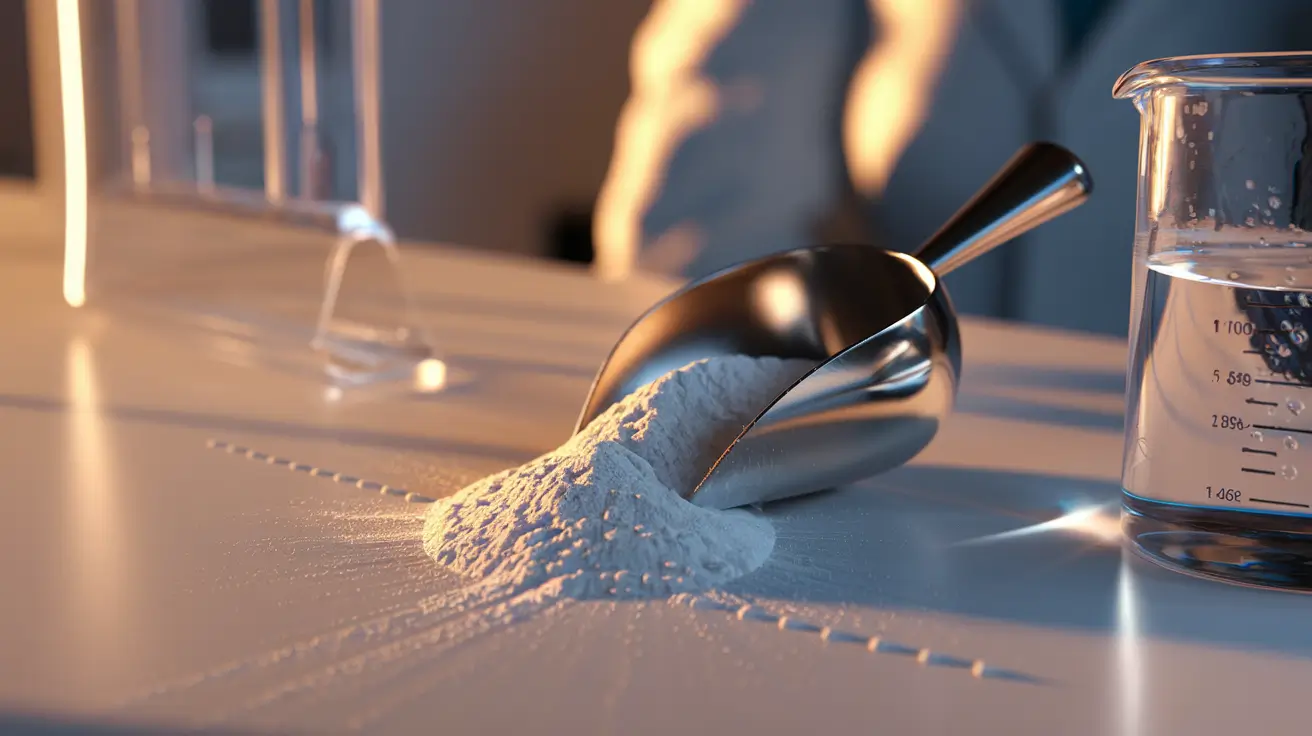Hydroxypropyl Methylcellulose (HPMC) stands as a versatile polymer with applications spanning construction, pharmaceuticals, food, and personal care industries. For purchasing managers and technical decision-makers, understanding the optimal parameters for HPMC implementation can significantly impact product quality and cost-effectiveness. This article provides comprehensive technical guidelines for HPMC usage across various applications, addressing common challenges and offering practical solutions. By following these evidence-based recommendations, you’ll gain the knowledge needed to select appropriate grades, optimize processing conditions, and troubleshoot common issues, ultimately improving your product performance and operational efficiency.

1. What Are the Key Properties of Hydroxypropyl Methylcellulose (HPMC)?
HPMC is a semi-synthetic, non-ionic cellulose ether derived from cellulose through chemical modification. Its unique structure consists of a cellulose backbone with hydroxypropyl and methyl substituents, which determine its functional characteristics. The degree of substitution (DS) and molar substitution (MS) are critical parameters that influence its performance in various applications.
Here’s what makes HPMC truly valuable: The polymer exhibits remarkable versatility due to its ability to form viscous solutions in cold water while demonstrating thermal gelation at elevated temperatures. This temperature-responsive behavior makes it particularly useful in controlled-release formulations and construction materials.
HPMC is available in various viscosity grades, typically ranging from 3 to 100,000 mPa·s (measured as a 2% solution at 20°C). The viscosity directly correlates with molecular weight, with higher molecular weight grades producing more viscous solutions. This property allows formulators to select specific grades based on application requirements.
The solubility profile of HPMC presents another key characteristic. It dissolves readily in cold water, forming clear solutions, but exhibits limited solubility in hot water. This temperature-dependent solubility stems from the hydrophobic interaction between methoxy groups at elevated temperatures, leading to precipitation or gelation.
| Свойство | Range | Воздействие приложения |
|---|---|---|
| Вязкость | 3-100,000 mPa·s | Controls flow properties, stability, and film thickness |
| Содержание метоксила | 19-30% | Affects water solubility and thermal gelation temperature |
| Содержание гидроксипропила | 4-12% | Influences surface activity and organic solubility |
| Размер частиц | 20-150 μm | Determines dissolution rate and dispersion quality |
| Температура геля | 50-90°C | Critical for thermal responsive applications |
Physical handling characteristics of HPMC include its appearance as a white to off-white powder with good flow properties. The material is hygroscopic, requiring proper storage conditions to prevent moisture absorption, which can lead to lumping and reduced functionality.
2. How Does HPMC Function in Construction Applications?
Construction materials represent one of the largest application sectors for HPMC. In cement-based systems, HPMC serves primarily as a water retention agent, preventing rapid water loss to porous substrates or through evaporation. This function is crucial for proper cement hydration and strength development.
But that’s not all you need to know. The water retention mechanism involves the formation of a polymer network that physically entraps water molecules, releasing them gradually during the curing process. This controlled water release ensures complete cement hydration, reducing the risk of shrinkage cracks and improving overall durability.
In mortars and plasters, HPMC significantly enhances workability by providing lubrication between aggregate particles. This improved workability translates to easier application, reduced labor costs, and better surface finish. The extended open time provided by HPMC allows for adjustments during application, particularly valuable in tile adhesives where positioning flexibility is essential.
| Функция HPMC | Benefit in Construction | Recommended Dosage |
|---|---|---|
| Удержание воды | Prevents premature drying, ensures complete hydration | 0.1-0.5% by weight |
| Улучшение работоспособности | Improves application ease and surface finish | 0.05-0.3% by weight |
| Adhesion Promotion | Increases bond strength to substrates | 0.2-0.6% by weight |
| Сопротивление провисанию | Prevents slipping of freshly applied materials | 0.1-0.4% by weight |
| Вовлечение воздуха | Improves freeze-thaw resistance | 0.05-0.2% by weight |
The adhesion enhancement mechanism of HPMC involves the formation of hydrogen bonds between the polymer, substrate, and cementitious materials. This interaction increases bond strength, particularly important in tile adhesives and renders. HPMC also influences setting time by forming a protective film around cement particles, slightly retarding hydration reactions while ensuring more uniform strength development.
Compatibility with other construction additives must be considered when formulating with HPMC. It generally works synergistically with air-entraining agents, redispersible polymer powders, and mineral fillers. However, interactions with some superplasticizers and accelerators may require optimization to achieve desired performance.
3. What Technical Parameters Should You Monitor When Using HPMC in Pharmaceuticals?
Pharmaceutical applications demand precise control of HPMC parameters to ensure consistent drug delivery performance. The substitution degree significantly impacts drug release profiles, with higher methoxyl content typically resulting in slower release rates due to increased hydrophobicity and gel strength.
Want to know the secret to successful formulation? Viscosity selection represents perhaps the most critical decision in pharmaceutical applications. Low-viscosity grades (3-100 mPa·s) are preferred for immediate-release formulations and film coatings, while medium to high-viscosity grades (4,000-100,000 mPa·s) are essential for controlled-release matrix systems.
The dissolution rate control mechanism of HPMC involves the formation of a gel layer around the dosage form upon contact with aqueous media. This gel layer acts as a diffusion barrier, controlling drug release through a combination of diffusion and erosion processes. The balance between these mechanisms can be fine-tuned by selecting appropriate HPMC grades and concentrations.
| Параметр | Немедленный выпуск | Контролируемый выпуск | Расширенный выпуск |
|---|---|---|---|
| Вязкость ГПМЦ | 3-100 mPa·s | 100-4,000 mPa·s | 4,000-100,000 mPa·s |
| Содержание метоксила | 19-24% | 22-30% | 28-30% |
| Содержание гидроксипропила | 7-12% | 4-12% | 4-7% |
| Typical Concentration | 2-5% | 10-30% | 20-40% |
| Dissolution Medium Impact | Минимальный | Умеренный | Significant |
Stability considerations in various pH environments must be evaluated when developing HPMC-based pharmaceutical formulations. While HPMC itself is stable across a wide pH range (3-11), its interaction with drug substances may vary depending on pH conditions. This can affect release kinetics, particularly for ionizable drugs whose solubility changes with pH.
Regulatory compliance represents another critical aspect of pharmaceutical HPMC usage. The material must meet pharmacopeia specifications, including USP, Ph.Eur., and JP monographs. These specifications cover parameters such as substitution degree, viscosity, heavy metals content, and microbial limits. Manufacturers should maintain appropriate documentation and testing protocols to ensure compliance.
4. How Can You Optimize HPMC Performance in Food Products?
Food applications leverage HPMC’s unique properties for texture modification, stabilization, and coating functions. The film-forming capabilities make it particularly valuable in coating applications, where it provides moisture barriers, oxygen barriers, and improved appearance.
The real advantage comes from understanding this: HPMC’s stabilization mechanisms in emulsions and suspensions involve both viscosity enhancement and interfacial activity. The polymer adsorbs at oil-water interfaces, reducing interfacial tension and providing steric hindrance against droplet coalescence. This dual functionality makes it more effective than many other hydrocolloids in stabilizing complex food systems.
Temperature-dependent behavior in food systems presents both challenges and opportunities. The thermal gelation property can be harnessed to create texture changes during cooking, particularly useful in baked goods and fried foods where HPMC forms a barrier that reduces oil absorption and moisture loss.
| Приложение | Функция HPMC | Рекомендуемый класс | Usage Level |
|---|---|---|---|
| Выпечка | Moisture retention, improved volume | Medium viscosity, high methoxyl | 0.5-2.0% |
| Fried Foods | Oil barrier, moisture retention | High viscosity, high methoxyl | 1.0-3.0% |
| Соусы и заправки | Stabilization, texture | Low-medium viscosity | 0.3-1.0% |
| Plant-Based Proteins | Binding, texture improvement | Средняя вязкость | 0.5-2.0% |
| Безглютеновые продукты | Structure building | Высокая вязкость | 1.0-3.0% |
Synergistic effects with other hydrocolloids can enhance overall functionality. HPMC works particularly well with xanthan gum, providing improved suspension stability and texture. Combinations with pectin or carrageenan can create unique texture profiles not achievable with single hydrocolloids. These synergistic combinations often allow for reduced total hydrocolloid usage, potentially lowering formulation costs.
Clean label considerations have become increasingly important in food applications. While HPMC is not considered “natural” by most standards, its plant-derived origin and long history of safe use make it more acceptable than many synthetic additives. Manufacturers should consider consumer perception and regulatory requirements when positioning HPMC-containing products in the marketplace.
5. What Are the Best Processing Techniques for HPMC Integration?
Proper dispersion represents the foundation of successful HPMC integration. The material tends to form lumps when added directly to water due to rapid surface hydration creating a gel barrier that prevents complete dissolution. To overcome this challenge, several dispersion techniques can be employed.
This is where many manufacturers go wrong: Adding HPMC directly to cold water without proper dispersion often results in fish-eye formation and incomplete hydration. Instead, the “hot/cold” technique proves most effective for many applications. This involves dispersing HPMC in hot water (above 80°C) where it remains insoluble, followed by cooling to allow complete dissolution.
Temperature control during incorporation significantly impacts final solution quality. For the hot/cold method, the initial water temperature should exceed the gel point (typically 80-90°C) to prevent premature hydration. The cooling rate should be controlled to ensure uniform hydration, with moderate agitation maintained throughout the process.
| Dispersion Method | Преимущества | Ограничения | Best For |
|---|---|---|---|
| Hot/Cold Technique | Complete hydration, minimal lumping | Time-consuming, energy intensive | Pharmaceutical, food applications |
| Сухое смешивание | Simple process, no special equipment | May not fully activate HPMC | Construction, low-viscosity solutions |
| Высокоскоростное смешивание | Rapid dispersion, efficient | Equipment cost, potential air incorporation | Industrial processes, high volumes |
| Slurry Method | Good dispersion in non-aqueous systems | Requires organic solvent handling | Coatings, organic systems |
| Регулировка pH | Improved dissolution rate | Limited to pH-tolerant applications | Specialized applications |
Mixing parameters for optimal hydration include both shear rate and duration. Initial dispersion benefits from high shear to break up agglomerates, while the hydration phase requires moderate agitation to prevent air incorporation while ensuring uniform distribution. Typical hydration times range from 30 minutes for low-viscosity grades to several hours for high-viscosity materials.
Scale-up considerations from laboratory to production require careful attention to mixing geometry, shear distribution, and temperature control. Pilot-scale trials are strongly recommended before full production implementation. Key parameters to monitor during scale-up include dissolution time, solution clarity, viscosity development, and final solution homogeneity.
Troubleshooting common processing issues often focuses on incomplete hydration, which manifests as clear gel particles or “fish eyes” in the final solution. This can be addressed by improving initial dispersion, increasing hydration time, or adjusting the dispersion technique. Other common issues include viscosity variations, which may result from inconsistent raw material properties or processing conditions.
6. How Do Environmental Factors Affect HPMC Functionality?
Environmental conditions can significantly impact HPMC performance across applications. Humidity represents a primary concern for both the raw material and finished products. As a hygroscopic material, HPMC absorbs moisture from the environment, potentially leading to lumping during storage and handling.
You might be surprised to learn that relative humidity above 65% can cause significant changes in HPMC powder properties, affecting flow characteristics and dispersion behavior. For finished products, high humidity environments may accelerate moisture uptake in HPMC films, potentially compromising barrier properties or controlled-release functions.
Temperature effects on solution properties follow a distinctive pattern. HPMC solutions exhibit decreased viscosity with increasing temperature up to the gel point, after which thermal gelation occurs. This behavior must be considered during processing, storage, and application, particularly for temperature-sensitive products.
| Фактор окружающей среды | Влияние на HPMC | Стратегия смягчения последствий |
|---|---|---|
| High Humidity (>65% RH) | Moisture absorption, lumping | Sealed containers, desiccants, climate control |
| Low Humidity (<30% RH) | Static charge buildup, handling issues | Anti-static measures, humidity control |
| High Temperature (>80°C) | Thermal gelation, viscosity loss | Temperature monitoring, cooling systems |
| Low Temperature (<5°C) | Slower hydration, increased viscosity | Extended mixing time, temperature adjustment |
| UV/Light Exposure | Minimal direct effect, potential oxidation | Opaque packaging, antioxidants |
pH sensitivity and buffer system interactions must be considered in formulations. While HPMC maintains stability across a broad pH range (3-11), extreme pH conditions can affect hydration rate and solution properties. In pharmaceutical applications, buffer components may interact with HPMC, potentially altering drug release kinetics or solution stability.
Light and oxygen exposure considerations primarily relate to potential oxidative degradation over extended periods. While HPMC itself shows good stability, oxidation can lead to chain scission and reduced molecular weight, manifesting as decreased solution viscosity. This effect becomes more pronounced in the presence of certain metal ions or oxidizing agents.
Storage recommendations for maintaining quality include keeping HPMC in sealed containers in cool, dry conditions (ideally below 30°C and 60% relative humidity). The material should be protected from direct sunlight and stored away from strong oxidizing agents. Under proper storage conditions, HPMC typically maintains its functionality for at least two years from the date of manufacture.
Заключение
Mastering the technical parameters of Hydroxypropyl Methylcellulose delivers substantial benefits across multiple industries. By selecting appropriate grades, optimizing processing conditions, and understanding environmental influences, you can achieve up to 30% improvement in product performance while potentially reducing formulation costs by 15-20%. Morton’s technical support team offers specialized consultation services to help you implement these guidelines effectively in your specific applications. Partner with our experts to develop customized HPMC solutions that address your unique challenges and drive innovation in your product development efforts.
Раздел часто задаваемых вопросов
В1: В чем разница между ГПМЦ и другими производными целлюлозы?
HPMC differs from other cellulose derivatives primarily in its substitution pattern and resulting properties. Unlike Methylcellulose (MC), HPMC contains hydroxypropyl groups that increase organic solubility and lower the thermal gelation temperature. Compared to Carboxymethylcellulose (CMC), HPMC is non-ionic and less sensitive to electrolytes. Hydroxyethylcellulose (HEC) lacks the methyl substitution of HPMC, resulting in different solubility profiles and no thermal gelation. These distinctions make HPMC particularly valuable in applications requiring temperature-responsive behavior and stability across various pH conditions.
Q2: How do you determine the optimal HPMC grade for specific applications?
Selecting the optimal HPMC grade requires evaluating several parameters against application requirements. First, determine the viscosity needed based on the desired flow properties, stability, or release profile. Next, consider the methoxyl and hydroxypropyl content based on required solubility characteristics and thermal gelation temperature. For pharmaceutical applications, regulatory compliance with specific pharmacopeia monographs may limit available options. Finally, conduct application testing with multiple grades to evaluate performance under actual use conditions, as theoretical predictions may not capture all interaction effects in complex formulations.
Q3: Can HPMC be used in combination with other polymers?
HPMC works effectively in combination with numerous other polymers, often producing synergistic effects. In pharmaceutical applications, combinations with polyvinylpyrrolidone (PVP) or polyethylene oxide (PEO) can fine-tune drug release profiles. For construction materials, HPMC pairs well with redispersible polymer powders to enhance flexibility and adhesion. In food systems, combinations with xanthan gum or carrageenan create unique texture profiles. When formulating polymer combinations, start with small-scale compatibility testing to identify potential interactions, then optimize ratios through systematic evaluation of key performance parameters.
Q4: What quality control tests are essential for HPMC evaluation?
Essential quality control tests for HPMC include viscosity measurement (using rotational viscometers at defined concentrations and temperatures), substitution degree determination (typically by gas chromatography after derivatization), particle size distribution (by laser diffraction or sieve analysis), moisture content (by loss on drying), and gel temperature measurement (by cloud point or rheological methods). For pharmaceutical grades, additional tests include heavy metals content, residual solvents, and microbial limits according to pharmacopeia requirements. Establishing specification ranges for these parameters ensures batch-to-batch consistency and application performance.
Q5: How does the manufacturing process affect HPMC performance?
The manufacturing process significantly influences HPMC performance through several mechanisms. The alkalization conditions during production affect the distribution of substituents along the cellulose chain, impacting solution properties and thermal behavior. The degree of polymerization of the starting cellulose determines the molecular weight range of the final product, directly affecting solution viscosity. Purification steps influence the content of residual reagents and by-products, which can affect stability and compatibility. Manufacturers can tailor these process parameters to produce grades with specific performance characteristics, making process understanding crucial for both producers and end-users of HPMC.




